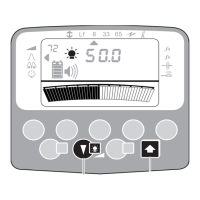
Do you have a question about the Radiodetection RD400PDL-2 and is the answer not in the manual?
| Power Source | 6 x AA alkaline batteries |
|---|---|
| IP Rating | IP54 |
| Category | Pipe and Cable Locator |
| Frequencies | 33kHz, 65kHz |
| Dimensions | 680 mm x 250 mm x 120 mm (26.8 in x 9.8 in x 4.7 in) |
| Operating Temperature | -20°C to 50°C (-4°F to 122°F) |
| Storage Temperature | -13°F to 158°F (-25°C to 70°C) |
Details on finding and using operating controls and features of the receivers.
How to use the receiver to locate, trace, pinpoint, measure depth/current, and find direction.
Procedures for locating cable faults and EMS markers using the receiver.
Details on finding and using operating controls and features of the transmitter.
How to apply a signal to a target line using the transmitter.
Managing receiver power, battery status, and performing self-tests.
Using the Shift key and selecting frequencies/modes on the receiver.
Selecting operating frequencies, modes, and adjusting speaker volume.
Selecting response types and using the accessory socket.
Understanding left/right indications and adjusting receiver gain.
Controlling the display backlight and switching between line and sonde modes.
Measuring depth to lines/sondes and signal current.
Using accessory sockets and interpreting operational error codes.
Using Power, Radio, and Active modes for signal detection.
Step-by-step guide for accurately pinpointing a buried line.
Using Null mode and obtaining depth measurements for lines.
CD signal use, reset, and depth in Power Mode.
Locating sondes and measuring their depth.
Configuring the transmitter and A-Frame for fault detection.
Using the CD signal method with the A-Frame to find faults.
Using the FF signal method with the A-Frame for fault detection.
Techniques for pinpointing faults and handling difficult ground.
Installing the EMS boot and configuring marker type codes.
Using the receiver for simultaneous marker and conductor location.
Operating transmitter On/Off and selecting frequencies.
Adjusting signal level and using A-V-O/Line measurement functions.
Using speaker, backlight, input/connection sockets, fuse, and battery access.
Proper use of the connection cable and ground stake.
Applying signals using induction and direct connection methods.
Using specialized accessories for signal application.
Information required for reporting issues and product serial numbers.
Critical safety advice for operating the equipment and handling batteries.
Guidelines for battery disposal and handling electrostatic discharge.